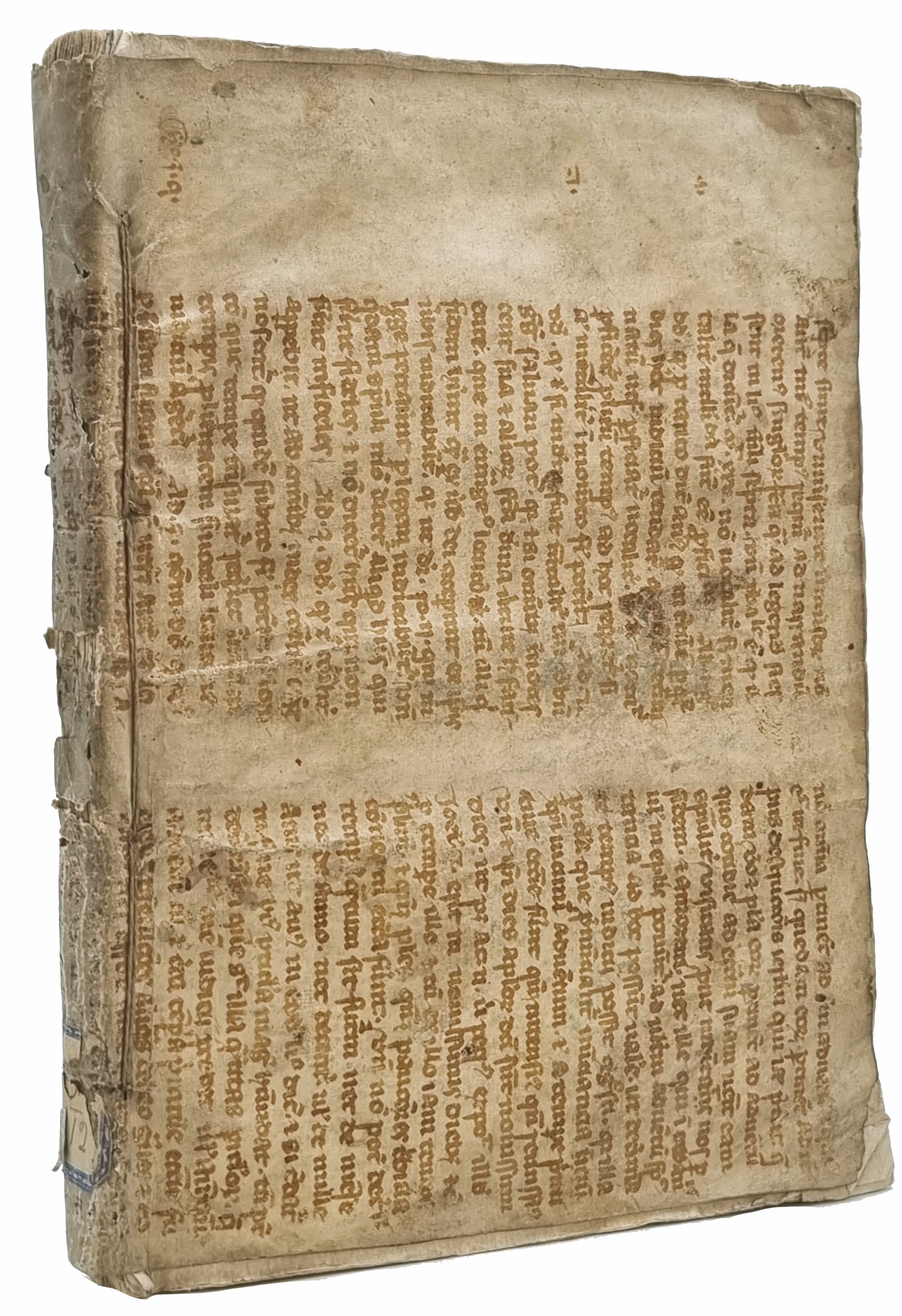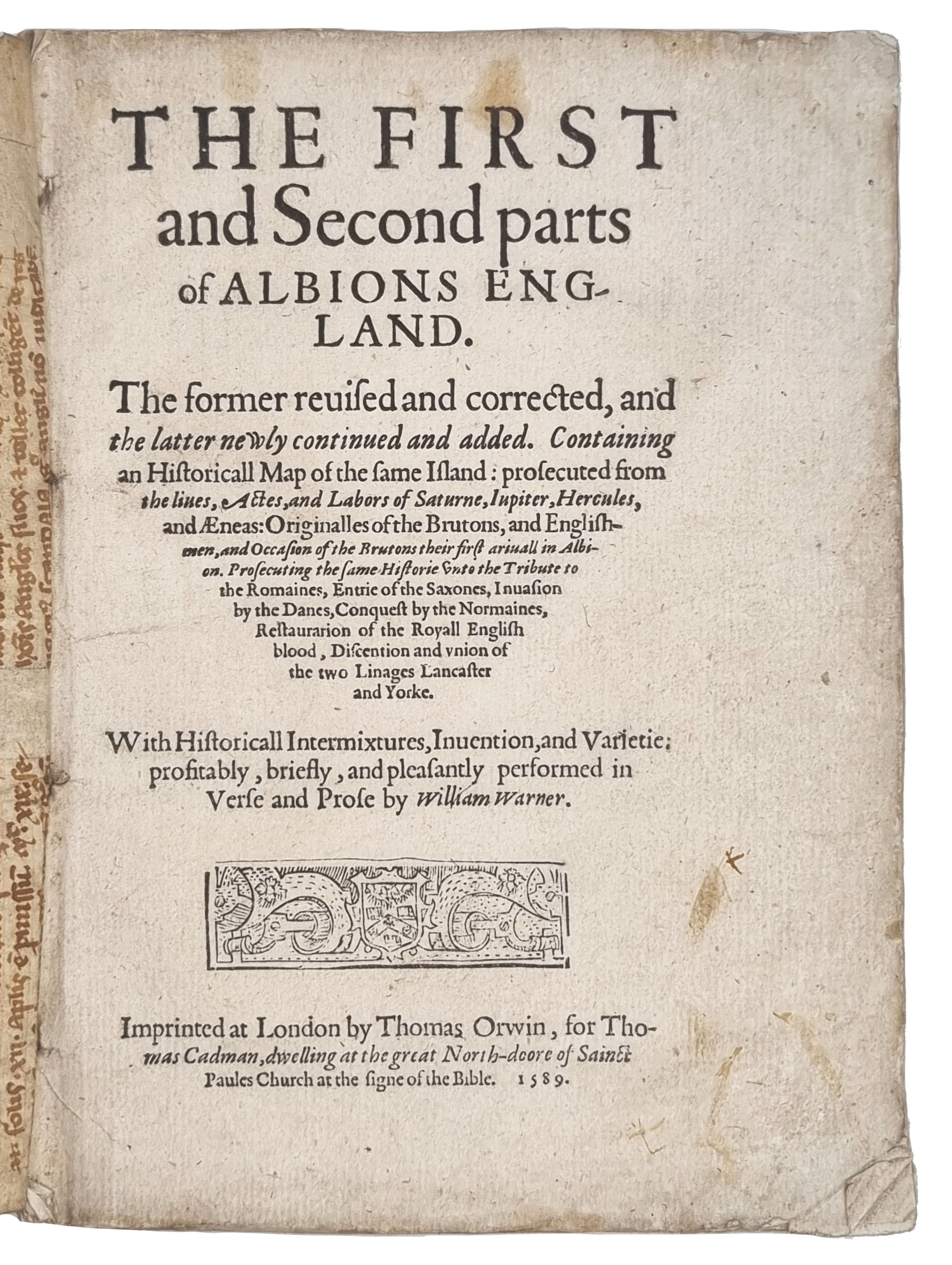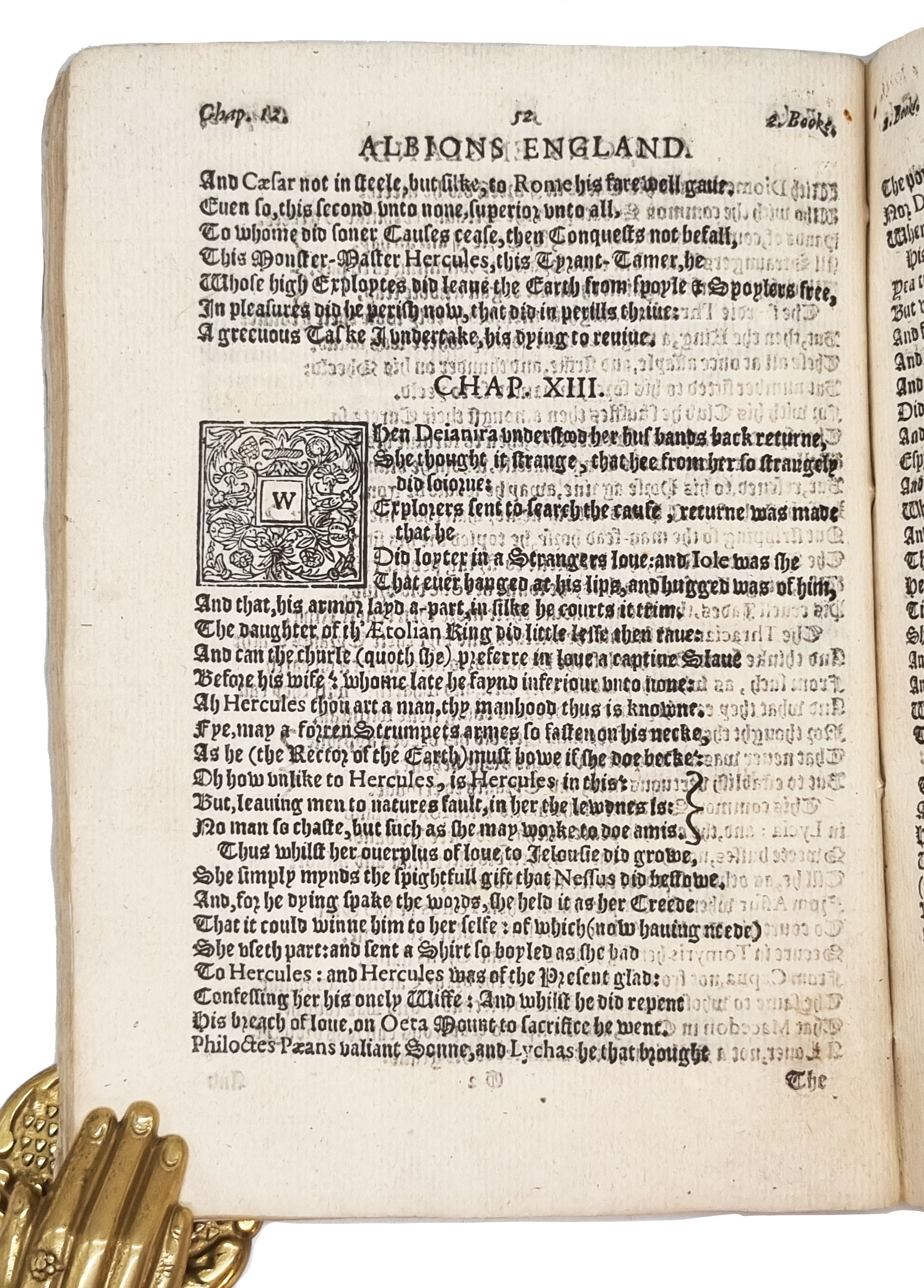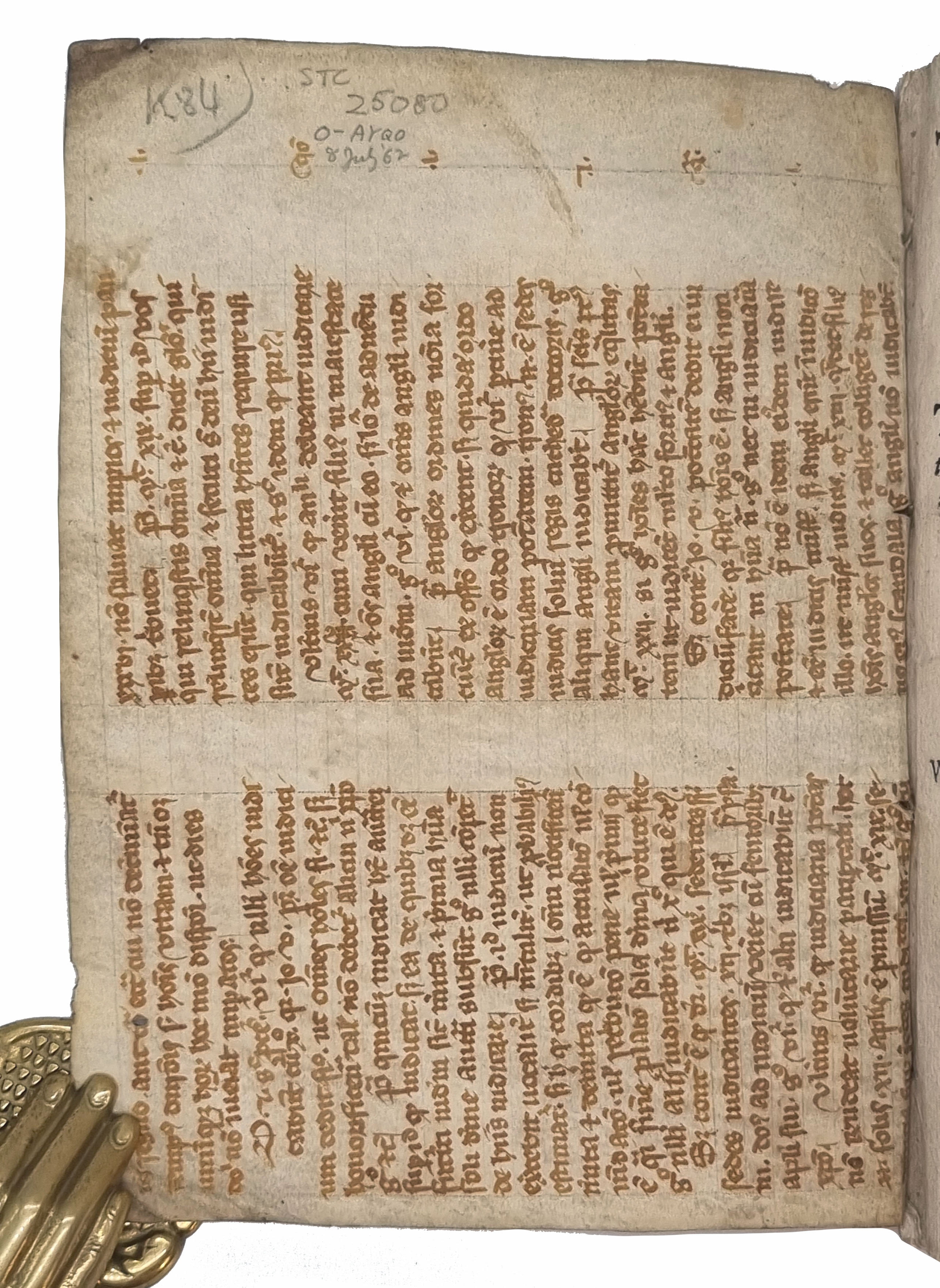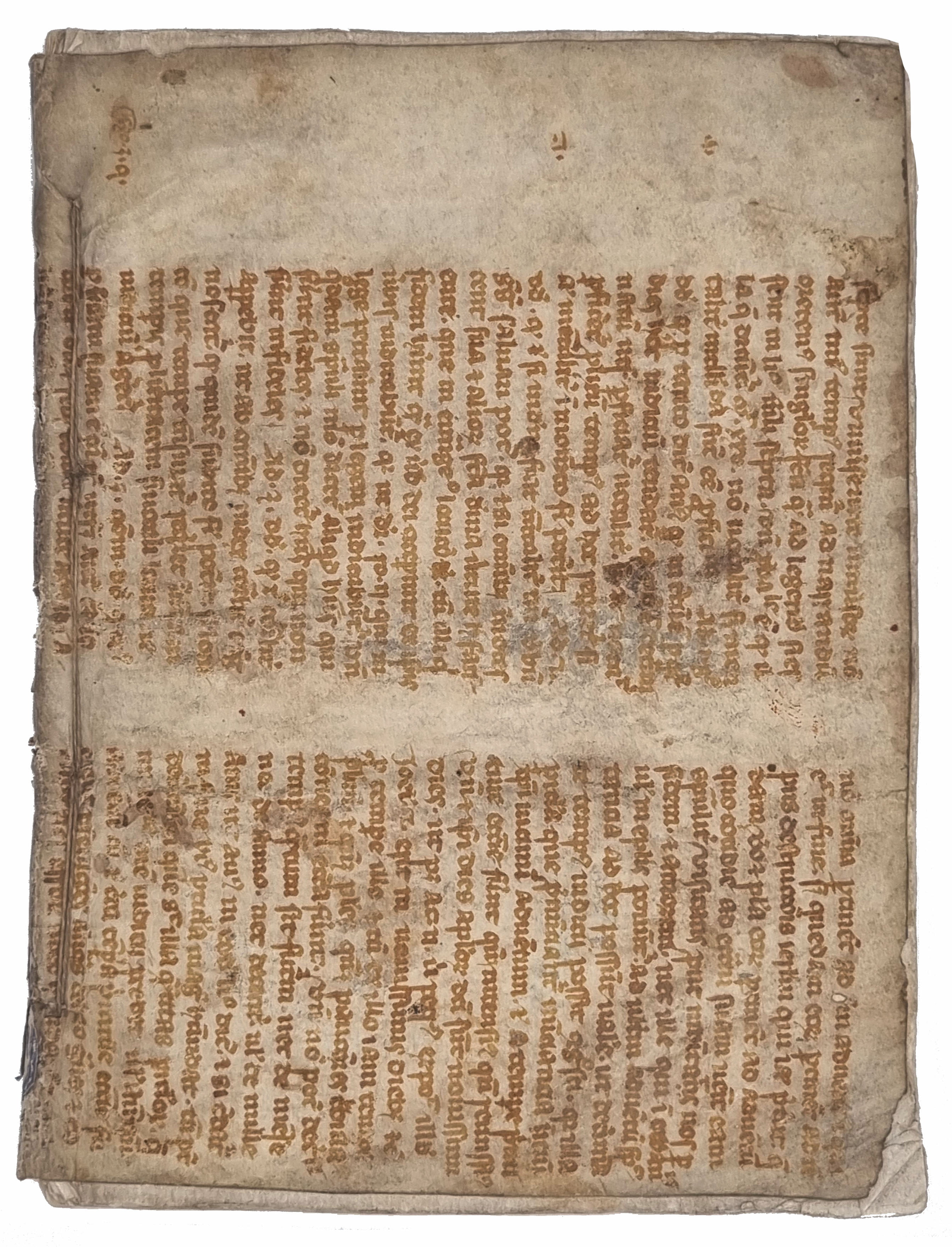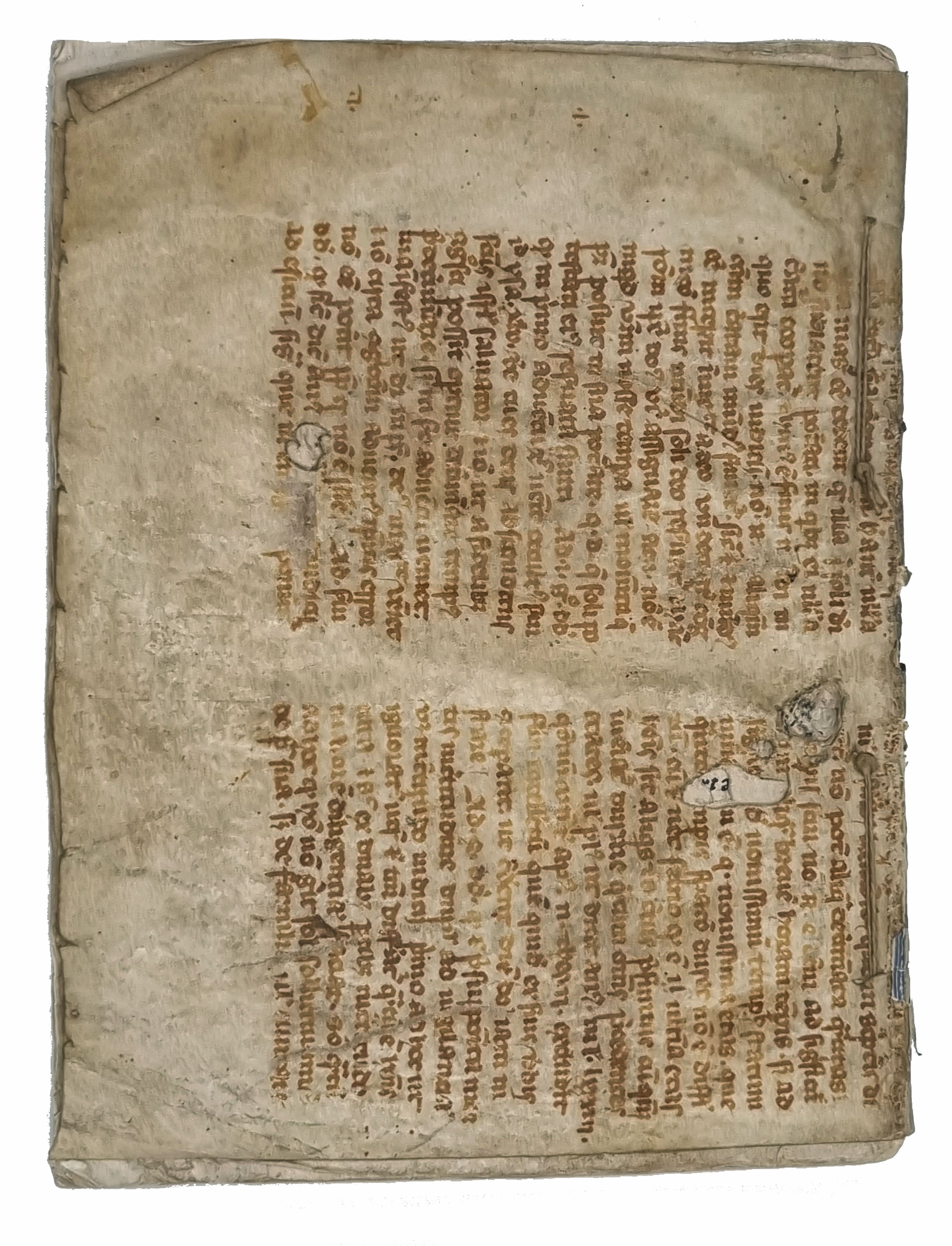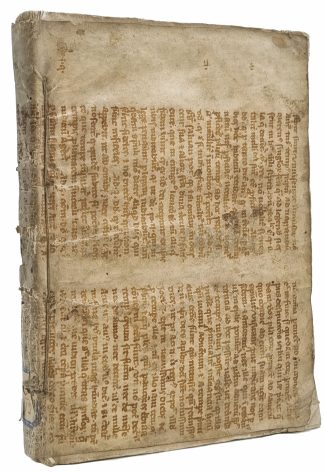WARNER, William
The first and second parts of Albions England.
London, By Thomas Orwin, for Thomas Cadman, 1589£12,500.00
FIRST EDITION thus. 4to. Two parts in one. pp. [viii], 100, [iv], 101-167, [ix]; [par.] , A-M , N-O², P-Z , 2A². N2 bound out of order, first gathering bound out of order ([par]1 blank, here after title with its conjugate [par]4 following). [Without woodcut plate]. Black letter, titles and prefatory material in Roman and Italic. Small armorial woodcut on first title, second part with separate title within a fine woodcut border, figures of David and Moses at sides, two satyrs below, grotesques above (McKerrow & Ferguson 117), floriated, grotesque and white on black criblé woodcut initials, woodcut head and tailpieces, typographical headpieces. Light age yellowing, minor light dampstaining in places, lower outer corners of first few leaves creased, two small hole in last few leaves just touching a few letters. A charming copy, entirely unsophisticated, stab bound in a C14 English theological manuscript leaf, in double column, a little rubbed, two small holes on lower cover. Tan morocco backed folding-case, with bookplate of Robert S. Pirie
A remarkable, completely unsophisticated copy, of the very rare second edition of Warner’s poem, with the addition of two books added from the first; stab bound as originally issued, probably never with the woodcut plate. “William Warner is best remembered for his ‘Albions England’ (1586), a verse history of Britain, covering in its final edition events from Noah to the reign of James I. .. Little is know of Warner’s biography. Born about 1558 – probably in London – Warner worked as an attorney of the Court of Common Pleas in the same city, where he developed his reputation as an author and most likely associated with other men of letters.. The episodic history, Albions England, written in fourteen-sylable lines, incorporates much fictional and mythical material; its structure is influenced by Ovid. This popular work went through several editions during Warner’s lifetime, each adding material to the narrative. The first, consisting of four books, was published in 1586 and relates events through the Norman Conquest. The second (1589), consisting of six books, covers events to the accession of Henry VII.” Tudor England: An Encyclopedia.
Warner fills his account with many picturesque details many of which he elaborates on from the original source material.One such example is his account of Robin Hood. Warner dates the historical Robin Hood to the reign of King Richard I, but he tells the story out of sequence, under the reign of King Edward II, as an inset to another tale. The narrator is an unnamed hermit; he is addressing the opposition leader Thomas, Earl of Lancaster (like Robin Hood, a ‘malcontent’), who has encountered him in the woods at a time when Lancaster is a fugitive from his enemies. Warner’s immediate source for his version was evidently Richard Grafton’s Chronicle at Large (1569). Like Grafton, he makes Robin Hood into a nobleman.
“Warner’s chief work and his earliest experiment in verse was a long episodic poem in fourteen-syllable lines, which in its original shape treated of legendary or imaginary incidents in British history from the time of Noah till the arrival in England of William the Conqueror, but was continued in successive editions until it reached the reign of James I. In its episodic design it somewhat resembled Ovid’s ‘Metamorphoses.’ Historical traditions are mingled with fictitious fables with curious freedom. The first edition in four books—now a volume of the utmost rarity—appeared in 1586, under the title ‘Albion’s England. … The work was brought down to the accession of Henry VII in the second edition, which included six books. .. ’Albion’s England’ in its own day gained a very high reputation, which was largely due to the author’s patriotic aims and sentiment. But his style, although wordy and prosaic, is unpretentious, and his narrative, which bears little trace of a study of Italian romance, and lacks the languor of current Italian fiction, occasionally develops an original vigour and dignity which partially justify the eulogies of the writer’s contemporaries. Thomas Nash in his preface to Greene’s ‘Menaphon’ (1589), after mentioning the greatest of English poets, remarked, ‘As poetry has been honoured in those before-mentioned professors, so it hath not been any whit disparaged by William Warner’s absolute Albions.” DNB.
Of the eight copies recorded by ESTC, the a copy at the Folger, those at Harvard and Huntington are recorded as having “woodcut plate’. The copies at the Library of Congress and Illinois both do not. BL and Oxford Bodleian do not specify. A remarkable copy of this very rare work.
STC 25080. ESTC S119575. Pforzheimer 1058 (1st edn. only). Grolier later edns, only.In stock


